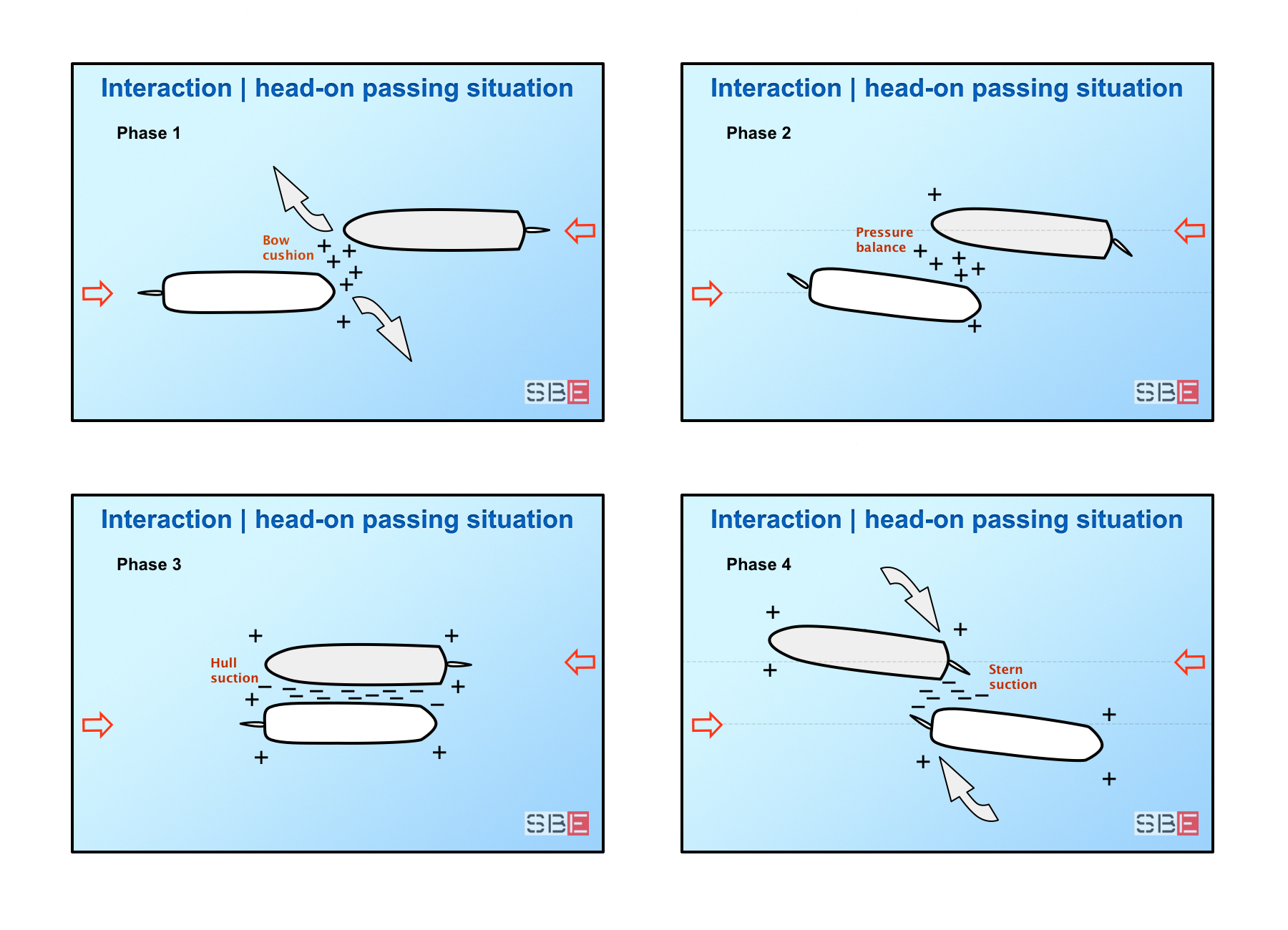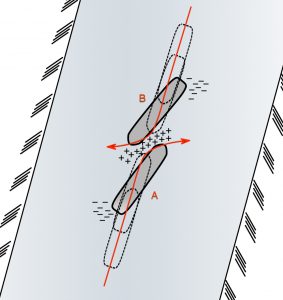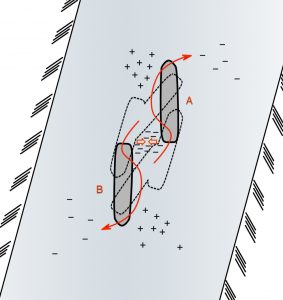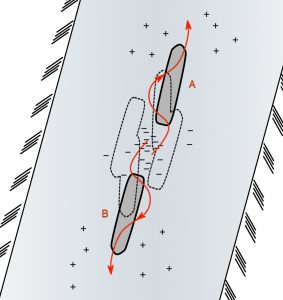Meeting Underway in a Canal
We now describe observed behaviours in the encounter between two ships in a canal.
They are ‘practical’ even if we talk about particular situations and not ordinary administration except in canal ports or rivers. Usually, we try to avoid encounters that can create dangerous situations in confined areas.
Suppose sea room permits, the crossing between two ships in port takes place at a safe distance. In that case, however, the interaction between the vessel can generate moments of force that we must take into account and mainly depend on the distance between the ships and their speed.
The four main phases can be summarised in the following scheme:

In many theory texts, you can find more or less what we report below. Let’s consider the worst-case: the banks and the degradation of the seabed from the sides towards the centre, which affect two ships that must meet underway while following opposite routes converging along the middle of the canal.
The centre of the canal is not necessarily the visual centre between the two sides. The bottom is often uneven. We can identify the centre as ‘where the rudder acts at its best, with similar angles to one side or the other. A good helmsman/pilot/master can recognise the centre by how the rudder moves.
Let’s see this manoeuvre in detail, specifying that the ships must perform it simultaneously:

- First of all, it is necessary to decrease the speed to keep enough engine power that allows for correcting/counteracting the unwanted effects, for limiting the pressure of the bow wave of the two ships and the consequent force of withdrawal;
- Ships must follow the route in the centre of the canal as long as possible in order not to be affected by the side effects – Suction/Cushion;
- It should take into account the fact that the smaller of the two ships suffer more from the effects of interaction;
- At the right time, the ships must move away from the centre of the canal, altering the course on their starboard – as required by COLREGs rule 14.

- When it feels a force that tends to move the two bows away, the helmsman must intervene with the rudders to counter and bring the ships parallel to each other;

- In the final phase, it is necessary to pay attention to the suction of the sterns and continue to use the engine and rudder appropriately to regain the centre of the channel.

- nella fase finale occorre fare attenzione al risucchio delle poppe e continuare a usare opportunamente macchina e timone per riguadagnare il centro del canale.
Masters must always keep the engine ahead to maintain steering efficiency at all times. Short ‘kick ahead’ may be necessary, but giving the engine astern would be disastrous.
Both ships must maintain radio contact to coordinate.
This manoeuver, we repeat, must be performed simultaneously, keeping both vessels in the centre of the channel so as not to be influenced by the bank/side effects.
